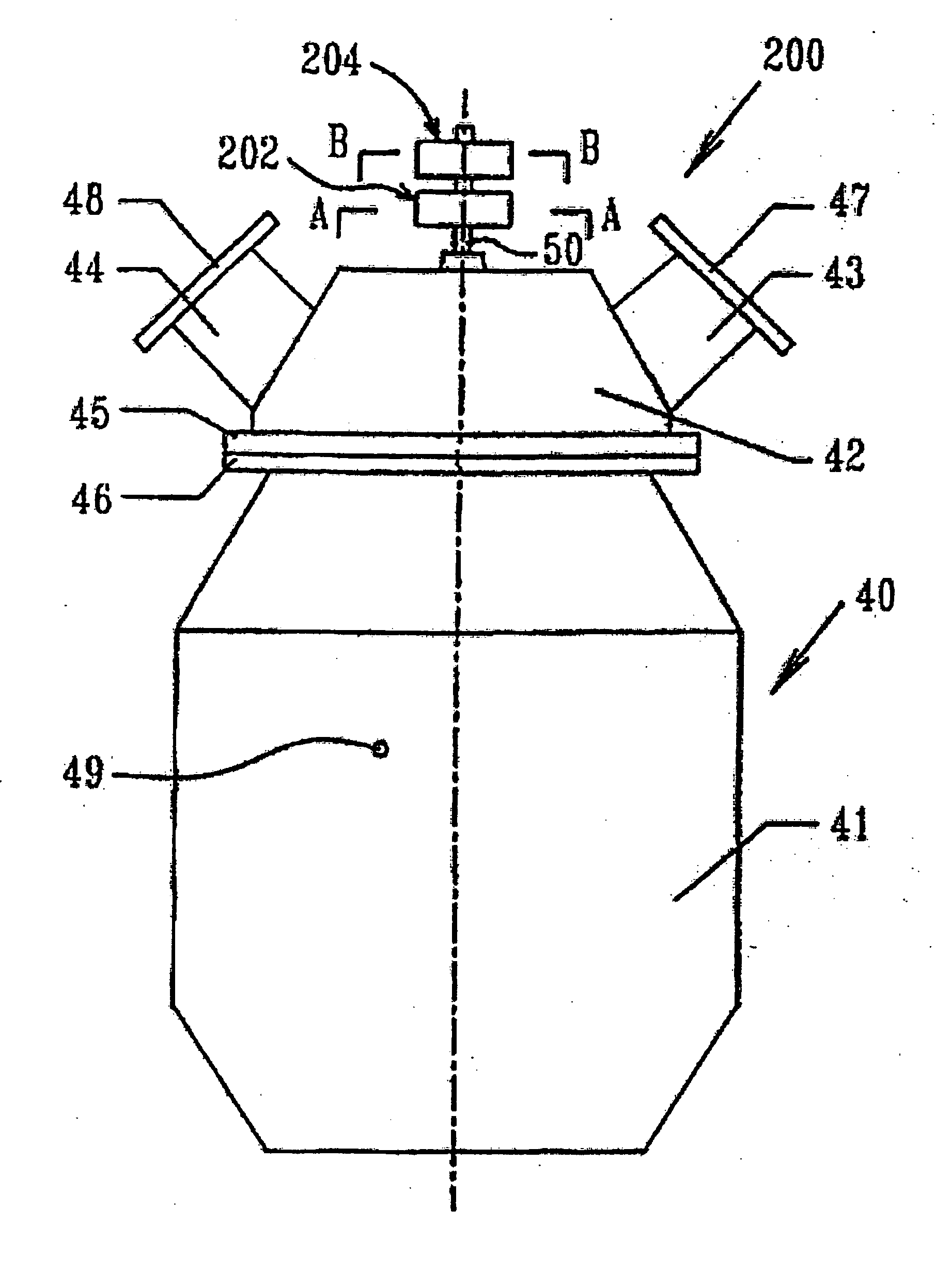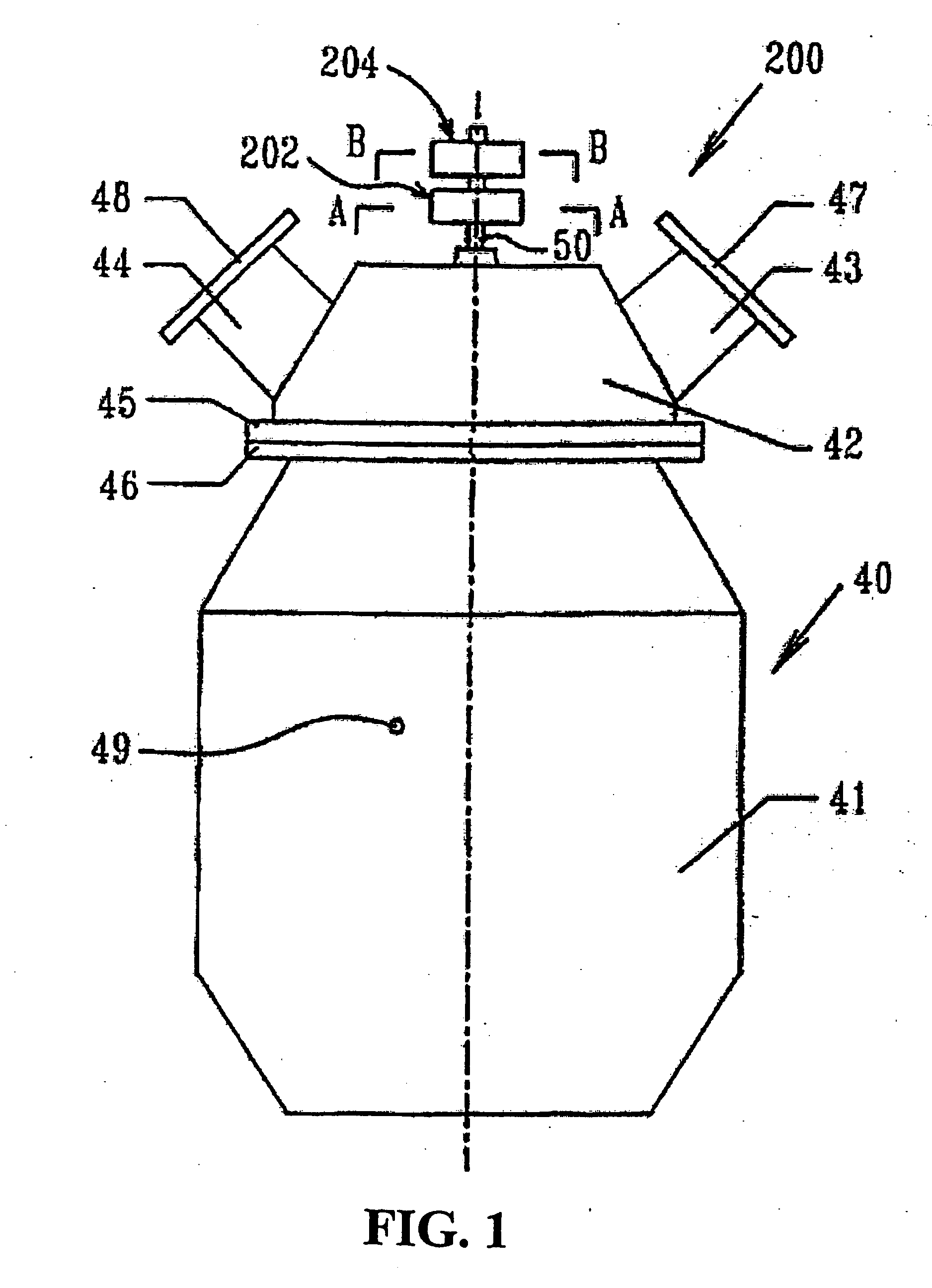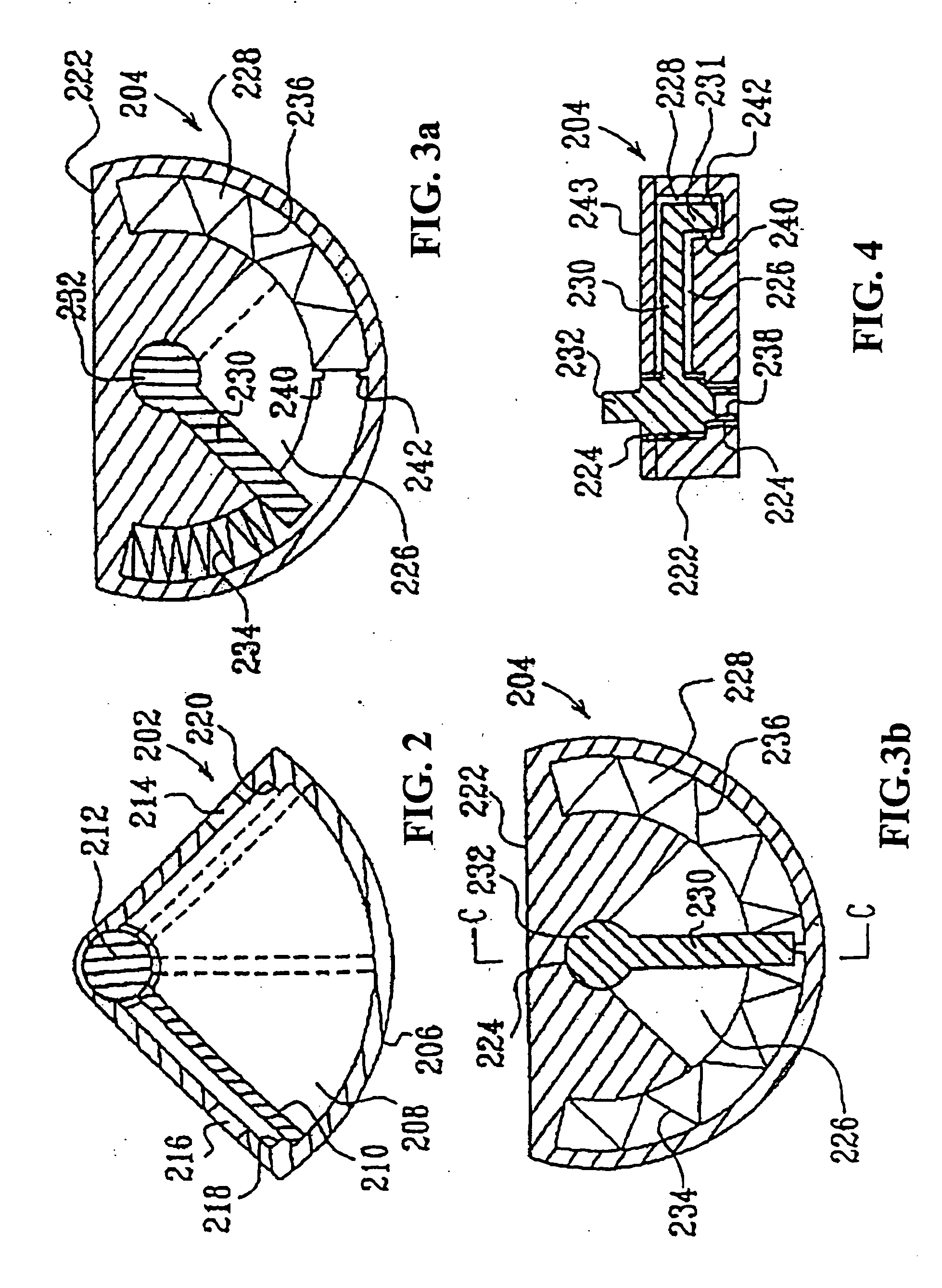Reversing flow catalytic converter for internal combustion engines
a catalytic converter and reverse flow technology, applied in the direction of engine components, exhaust treatment, mechanical equipment, etc., can solve the problems of affecting the performance of the engine,
- Summary
- Abstract
- Description
- Claims
- Application Information
AI Technical Summary
Benefits of technology
Problems solved by technology
Method used
Image
Examples
Embodiment Construction
[0062]FIG. 1 illustrates an improved catalytic converter 200 in accordance with an embodiment of the present invention which incorporates a safeguard system to inhibit overheating the catalyst monoliths.
[0063] With reference to FIG. 1, the catalytic converter 200 comprises a container 40 and valve housing 42 with a similar structure and components as described in U.S. Pat. No. 6,148,613. A rotary actuator 202 and a center return mechanism 204 are mounted on the drive shaft 50 of the valve disk 18. The rotary actuator 202 is controlled to periodically rotate the valve disk 18 between the first and the second positions to reverse gas flow through the container 40.
[0064] As shown in FIG. 2, the rotary actuator 202 includes a housing 206 which encloses a pressure chamber 208. A moveable vane 210 is mounted to drive shaft 212 which is adapted to be connected to the shaft 50 of the valve disk 18 to rotate together therewith. The housing 206 has a first opening 214 and a second opening 2...
PUM
 Login to View More
Login to View More Abstract
Description
Claims
Application Information
 Login to View More
Login to View More - R&D
- Intellectual Property
- Life Sciences
- Materials
- Tech Scout
- Unparalleled Data Quality
- Higher Quality Content
- 60% Fewer Hallucinations
Browse by: Latest US Patents, China's latest patents, Technical Efficacy Thesaurus, Application Domain, Technology Topic, Popular Technical Reports.
© 2025 PatSnap. All rights reserved.Legal|Privacy policy|Modern Slavery Act Transparency Statement|Sitemap|About US| Contact US: help@patsnap.com



